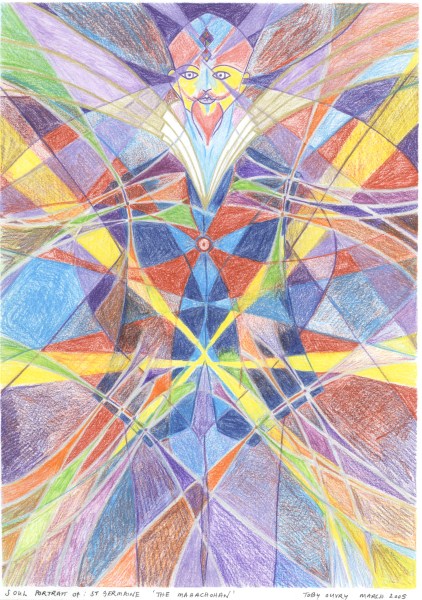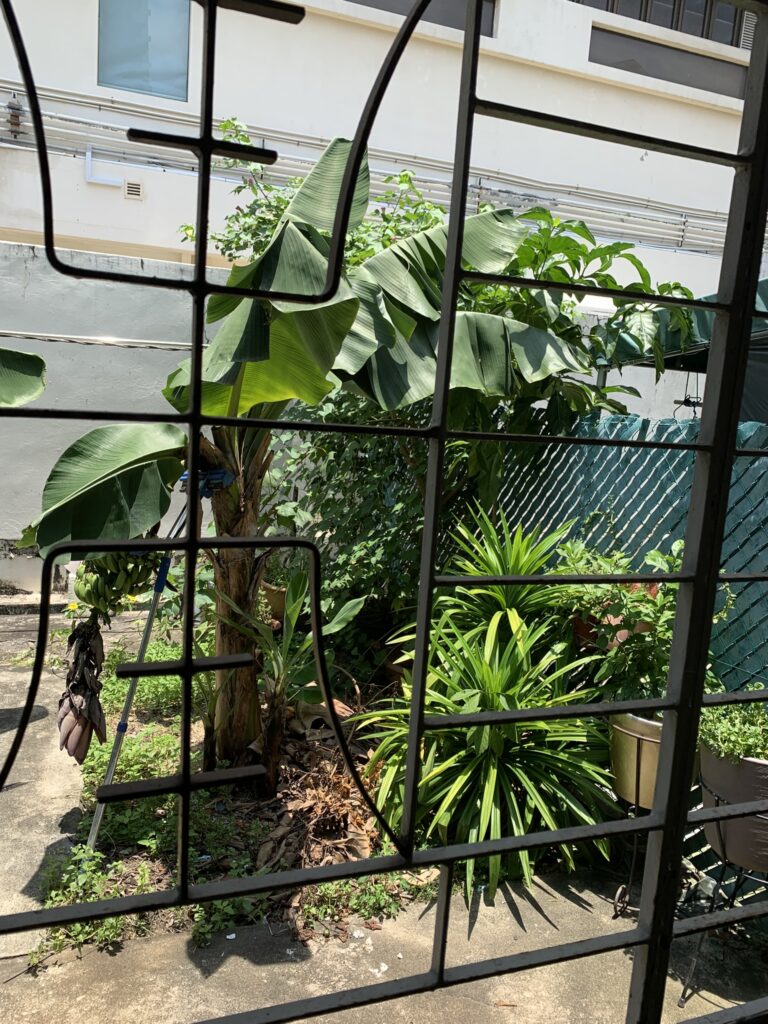“Magic means being able to change one level of our reality by working on it from the level, or plane above it”

Dear Integral Meditators,
This week’s article is the first part of a re-work of an old article of mine on your ‘inner magician’, with part 2 next week.
If you enjoy it, then you might enjoy coming along to the Wednesday and Saturday bright shadow meditations, which are magical in the way described below.
Heads up for the last workshop of the year, Saturday 13th December, 9am-12.30pm – Psychic & Psychological Self-defence half day workshop, also very much an ‘evolutionary magical’ focus here.
In the spirit of your inner magician,
Toby
Connecting to your magical self or inner Magician
I have recently been working on re-titling and writing notes for some artworks that I completed back in 2005. The first of these “The Magician” you can see in the image on this page. The image itself is meant as a way of visually connecting to our “Inner Magician”. The inner magician is that part of our inner self that is both creative and magical, and that if we harness it effectively has the power to change our daily life and experience for the better.
Who or what is our inner magician?
Here is a working definition:
“The higher expression of our inner magician is that part of self that is able to work with the higher, evolutionary or developmental expression of magic.”
Magic in this context means the following:
1) Being able to affect or change one level of our reality by working on it from the level, or plane of reality above it.
2) Engaging our creative imagination vividly and consciously to “sculpt” our experience of any given situation for the better.
3) Not being content to let good ideas remain in our head, but actively finding ways of expressing those ideas concretely in our daily life.
Let’s take a closer look at these three aspects of magic:
1) Being able to affect or change one level of our reality by working on it from the level or plane of reality above it.
In its simplest terms this means that you use your mental or thought-based mind to change your physical and emotional reality for the better, and you use your spiritual or intuitive mind (which operates on a level beyond thought) to change your thinking patterns for the better.
A simple example might be this:
- If I experience physical pain because of an injury or illness I use my thinking mind to be constructive, telling myself that the pain won’t last forever, and encouraging myself to practice patience. This is using my thoughts to positively affect my physical reality.
- If I find myself having repetitive dissonant thoughts about my pain and illness, then I can temporarily suspend my thinking (this is really where meditation comes into the picture) and move into a state of mind beyond thought. Doing this enables me to release the momentum of all the imbalanced thoughts that I was having, so that my mind becomes a “clean slate” so to speak which I can then replace the cycle of ‘negative’ thoughts with more appropriate and affirmative ones.
So, thinking mind works magic on physical world and emotions, spiritual/non-conceptual mind works to affect and control the thinking mind.
Looking at this example, you might think that this is simply working skillfully and creatively with your mind and consciousness to affect your bodily experience, but in terms of the way we are talking about it, that is exactly what a large part of functional magic is!
I’ll be posting a part 2 of this article next week, or if you like you can read the full original article here.
© Toby Ouvry 2025, you are welcome to use or share this article, but please cite Toby as the source and include reference to his website www.tobyouvry.com
Upcoming classes & workshops
Ongoing on Tuesday’s & Wednesday’s (live & online), 7.30-8.30pm – Weekly integral meditation classes
Starts Tuesday 11th & 12th November, 7.30-8.30pm – Going beyond your limitations, tapping into your hidden strengths – Meditating with your bright shadow, a 6-week course
Starts Saturday 15th November, 5.30-6.15pm SG time – Bright shadow meditation Deep-dive – A 5 session practice series
Saturday 29th November, 7-9pm – Living Life From Your Inner Center – Meditations for Going With the Flow of the Present Moment
Saturday 13th December, 9am-12.30pm – Psychic & Psychological Self-defence half day workshop
Follow Toby on: LinkedIn, YouTube, Instagram
Integral Meditation Asia
Online Courses * 1:1 Coaching * Books * Live Workshops * Corporate Mindfulness Training *Life-Coaching * Meditation Technology


